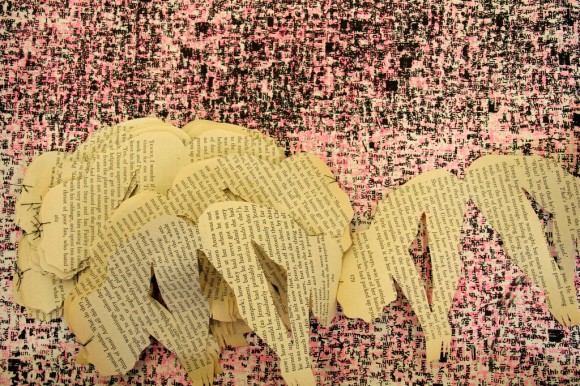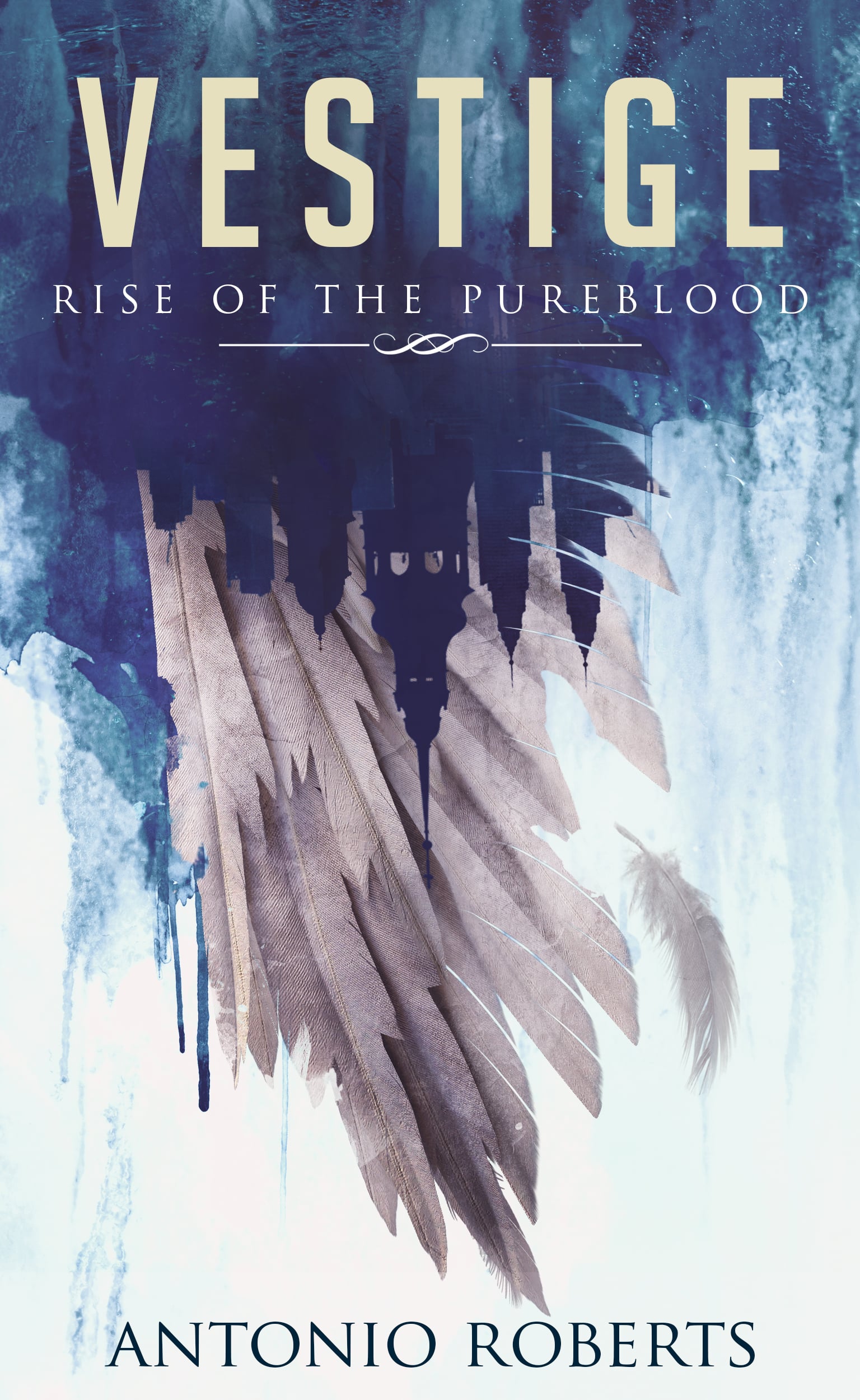Do you borrow phrases and concepts from other works in your own? If yes, then you’re using intertextuality, perhaps even without knowing it.
Though it sounds intimidating at first, it’s quite a simple concept really:
Intertextuality denotes the way in which texts (any text, not just literature) gain meaning through their referencing or evocation of other texts.
What Is Intertextuality?
When writers borrow from previous texts, their work acquires layers of meaning. In addition, when a text is read in the light of another text, all the assumptions and effects of the other text give a new meaning and influence the way of interpreting the original text.
It serves as a subtheme, and reminds us of the double narratives in allegories.
This term was developed by the poststructuralist Julia Kristeva in the 1960s, and since then it’s been widely accepted by postmodern literary critics and theoreticians.
Her invention was a response to Ferdinand de Saussure’s theory and his claim that signs gain their meaning through structure in a particular text. She opposed his to her own, saying that readers are always influenced by other texts, sifting through their archives, when reading a new one.
In a recent short story I was writing, I included a quote by Turgenev at the beginning, which served as a sum-up of my main premise in the story.
Intertextuality Example:
A famous example of intertextuality in literature is James Joyce’s Ulysses as a retelling of The Odyssey, set in Dublin. Ernest Hemingway used the language of the metaphysical poet John Donne in naming his novel For Whom the Bell Tolls.
Even the Bible is considered an instance of intertextuality, since the New Testament quotes passages from the Old Testament.
Beware of Plagiarism
One thing you need to absolutely remember when evoking a reference to another work is to make it clear it’s a reference. Once intertextuality has gained popularity, there were cases of authors using phrases of other works, without indicating what they are doing. There’s a thin line between using intertextuality as a literary device and plagiarising, even if not intended.
Intertextuality as a Sophisticated Concept
A complex use of intertextuality is considered a sophisticated tool in writing. Rather than referencing phrases from other works, a refined use of intertextuality involves drawing upon an ideology, a concept, or even rhetoric from others.
Thus, you may explore the political ideology in your story by drawing upon the current rhetoric in politics. Alternatively, you may use a text source and explore it further.
Looked at it this way, the popular rewriting of fairy tales in modern contexts can be viewed as a highly cultured use of intertextuality.
To be sure, intertextuality is a powerful writing tool that shouldn’t be overlooked. It opens new possibilities and perspectives for constructing a story.
What other uses of intertextuality can you think of? Have you explored this literary device? Share your thoughts below.
Need more grammar help? My favorite tool that helps find grammar problems and even generates reports to help improve my writing is ProWritingAid. Works with Word, Scrivener, Google Docs, and web browsers. Also, be sure to use my coupon code to get 25 percent off: WritePractice25
PRACTICE
Freewrite for fifteen minutes and include a reference (a word, phrase, concept, quotation etc.) of another work in your practice. When you’re done, post it in the comments.
As always, be supportive to the others.








“They were able to compose only by bringing themselves to attacks of inspiration, an extinct form of epilepsy.” – Yevgeny Zamyatin in We.
“[Goethe] leaned down, opened the drawer, and found a pile of rotten apples. The smell was so overpowering that he became light-headed. […] Schiller had deliberately let the apples spoil. The aroma, somehow, inspired him, and according to his spouse, he ‘could not live or work without it.'” – Goethe, cited in Odd Type Writers
Inspiration isn’t just a fickle mistress, it’s also an unnatural mental state. It’s an intoxication that disrupts the normal functions of the brain. It’s accompanied by a release of endorphins and dopamine, producing a sense of euphoria and invincibility in the artist and making the whole experience addictive.
Once the effects wear out, the victim is left deflated with a sense of guilty elation. Then, withdrawal kicks in with a bout of “the blues”.
The victim will then actively seek out inspiration through various methods, both rational, like reproducing the setting in which inspiration struck, and irrational, like calling upon the forces of the occult, and everything in between, with various degrees of failure. Others will simply wait for inspiration to strike again, which can take from days to months, and longer.
A more reliable way to get your fix is to work for it. Start creating without inspiration, and it will eventually manifest itself spontaneously. Creation breeds inspiration. More so than the other way around.
Inspiration isn’t all that fickle when you get to know her.
I found your comments very insightful.
‘Creation breeds inspiration’. Amen. It gets easier, once you push through, for sure.
“Nothing is easy.” – Zeddicus Z’ul Zorrander in the Sword of Truth series.
I strode to where Angriz lay. Looking down on him from this position, I noticed
what I had missed before: his jaw was unhinged. I squatted down to determine
how I might best grab his jaw to fix it. The sight of his massive fangs caused
me to swallow hard. They were intimidating. They were triangular and serrated
like a shark’s teeth, but on a much larger scale. My fingers were going to get
cut pretty bad by them. The worst part was I had no idea how the Bloodtaste
worked. He might be overtaken by it once more. I sighed as a line from my
favorite book series, “The Sword of Truth”, came to mind; ‘Nothing is ever easy.’
Knowing that nothing could be gained by further delay, I reached out and grasped Angriz by his jaw. The fingers of my right hand went into his mouth over his teeth as I grasped the point of his jawbone. I used my left hand for leverage and guidance and I tugged his jaw outward and swung it back into alignment. I turned the air blue when his razor sharp fangs sliced my fingers open. His jaw went back into place with an audible click and I released the pressure. I took my hand out of his mouth and without thinking, placed the lacerated digits into my own to comfort them. Swearing like a sailor denied shore leave, I got up and went to the packs to get cloth for my fingers.
I wrapped my fingers, not thinking about anything, when a gasping growl gave me a start. I whirled around to find Angriz sitting up with his hands clutching his
head.
“By Vashara, my head hurts!” he cried.
I felt a huge grin grow on my face. I strode over to him, speaking as I went. “It is good you’re awake, Angriz!” I said. I lowered my voice so I didn’t wake Dearbhaile.
He turned to look at me, dropping his hands and dropping his jaw. “What has happened to you, Carter?” he whispered.
I blinked in confusion, and followed his eyes to where he was looking. I discovered I was covered in a silvery white fluid. I then remembered being sprayed with Belial’s blood after decapitating the half-demon. That must be what it was.
“That can wait until later, Angriz,” I said. “Right now we have bigger problems.”
“What is going on, Carter?”
“Keeper Dearbhaile is hurt. Come, I’ll show you.”
I lead Angriz to where she lay. I knelt and pointed out the wounds I had noticed from my preliminary examination. The half-dragon growled, eyes flashing, at what had been done to our friend. He squatted down and stared at her injuries.
“They tortured her,” he said without inflection.
“Yes,”
“This is more than I know how to heal. Can you do anything?”
“Some. I’ll need your assistance.”
He nodded in agreement. I directed him to gather wood to build a large fire not far from where she lay. I gathered our blankets and placed them near her. After the fire was going, we began with the easy stuff. I had Angriz bring her awake.
“Keeper Dearbhaile,” I said to her. “I need to learn where you are hurt. I need you conscious in order to do so, but you don’t have to speak unless necessary. Nod if you understand me.” A slow nod. “We need to remove your clothing to better examine you for injury.”
She nodded again. I directed Angriz in cutting away her robes. Though we were as gentle as we could be, she cried out from the pain of our movements.
“Carter,” Angriz whispered, “Why do we need her clothing off?”
“Because I can’t look through them to see what injuries might be hidden by her clothes. Can you?”
He shook his head. I turned from him and skimmed my fingers over Keeper Dearbhaile’s body. I began at her skull and went downward, relying on her flinching to tell me where her injuries were. There was no reaction until I touched the area on her right side just beneath her breast. She arched her body, hard, away from my touch. I peered at the area. All I was able to detect was a dark red mark. There didn’t appear to be any bruising, but I wanted to be certain. I pulled Angriz closer and had him to look. I knew his vision was sharper than mine in low light.
That’s a proper use of intertextuality. Well done.
Thanks.
I am not sure if I am doing it right. Please correct me if I misunderstood.
ONE, TWO, START! The annual race has started. This is a 24 hour race among many the members of the club. The person who loses will be served as a slave for an entire day to the club members. Immediately within minutes, we see John Feller running past the rest of the members. In fact, he was an all time Olympic Champion in the 400-yard dash. Everyone else is following behind him, scrubbing along to catch up to him. Within 8 hours, John finished 60% of the race while the close second Gene Jackson is only at 40% completion. Behind Gene, there are other members ranging from 35%-40% completion. As we can see, John definitely is the winner. However, there is no reward for the winner but only punishment for the loser. After another 4 hours, John is at 90% while the rest are at 52-60% completion. There are still 12 hours left in the race and John can clearly finish within a few hours. However, it is already 9:00 PM.
John, feeling powerfully illustrious, decided to stop by and take a quick nap before he continues. Even if he sleep for 4 hours, the rest of the group will only be 70-80% complete. He will still be way ahead of them. So John decided to take a quick nap before he sprints to the finish.
One hour, two hours, three hours, four hours. Like John planned, the group is only at 70-80% completion. Two more hours went by, now the group is at 78-90% with Gene leading the pack. Out of the corner of his eyes, he still see John wresting and turning. Next to him, he saw that John actually took some sleeping pill to help him take a nap. Thinking it would be fun, Gene slipped over and mixed the leftover pills and created an airborne solution. He carefully placed the medication under John’s nostrils, and off he went.
after six more hours went by, everyone had finished the race besides John. Everyone was worried what happened. Another 18 hours went by before we saw John running toward the club. John loudly proclaimed, “WTF, how did you guys finished the race in 18 hours? Did you guys cheat?” It turned out, John didn’t realize a full day has already passed since they started the race. Looks like John is doomed to be slave for the next 24 hours…or the next 6 hours if the club members are nice about it.
Hmmm, I did get confused. Have you included somebody’s text/work in the practice?
I try to make it an analogy to the tortoise and the hair concept. Is that the right way of doing it?
Oh right, now I see. Yeah, of course – there’s no strict use, so you’re pretty free in doing as you wish. Smart, by the way.
“The darkest places in hell are reserved for those who maintain their neutrality in times of moral crisis” –so quoted Dante in his Divine Comedy.
It is a fact, that there are two sides to any coin. And these two sides are not right or wrong, nay…they are the two views, two opinions that two different people, two different societies, two different countries hold, and if you were a stranger to their customs and traditions, you would agree with both of them, perhaps without wanting to.
But it is the opinion that wins (through war or debate) that is declared as the right opinion, the right view. In reality, it may not be so.
Taking sides in a battle does not mean that you agree to the battle, but not taking any sides does mean that you will follow the one who wins, which shows your lack of decision making, your lack of exercising the power which you, quite unknowingly hold.
A single opinion can make a drastic difference, perhaps even a bad one, but a single opinion matters. If it didn’t then there would have much more sorrow and injustice in this world (as if the sorrow and injustice we already have is little!).
Being neutral means being indifferent, not diplomatic, because diplomats have an ulterior motive too. Nay, diplomats are not neutral, never! They prefer not to disclose their deepest thoughts.
It is the person who does not exercise the power he holds effectively, the person who is unsure about his conscience, about his upbringing that fails, and in the fact that he must be taken to the deepest circle of hell (as Dante mentions), there exists no doubt.
Being opinionated does count. Even if the opinion is wrong, believing in the wrong with the right motive can even change the wrong and turn it into the right!
Yes, leadership does take quite a lot of confidence, but a leader has with himself the fellowship of hundreds of followers to boost his confidence. But the true soul is the one that follows the leader only after deciding for himself whether the leader is right. He is the person who trusts his conscience first and then the words of a leader. And if his conscience advises that the leader is wrong, then he stands up for himself, maybe alone and fights against all odds to proclaim his righteousness – that is the true hero.
And then, isn’t it better to have a true enemy rather than a doubtful follower?!
I really like this Saunved, and I tend to agree on the neutrality not being the way to go. Dante can be used quite prolifically. 🙂
Dante really was (and is) an influential figure! I’m reading Inferno right now and the words seem to pierce right through the heart! I’m glad you liked this! 😉
I’ve read it such a long time ago, so you gave me a push to give it another go, perhaps with grown-up and critical eyes this time. 🙂
🙂 I hope I’ll grow up and say the same! 😀
Sophie sat down at
her desk, determined to start her new practice of writing every day. She opened
a new file on her laptop and created a new folder for daily writing exercises,
then set a fresh pad of paper with blue,
red and black pens to the right side of her desk, and carefully placed The Elements of Style to the left, on top of
her latest copy of Writer’s Digest. She
checked her watch. Seven minutes used up. Still eight to go. She removed the
tea bag from her cup and paused to smell the apple cinnamon scent and gaze out
the window at the tree across the street, just starting to show its fall
colours. What should she write? Eight minutes was too short to start on the
novel she had always wanted to author. It was too short to write a short story,
even. Maybe some brainstorming for tomorrow’s session, or maybe a poem. She
could get a start on a poem. She glanced at her watch again. Six minutes. Well,
maybe she could find some good writing prompts for the rest of the week.
Google, where will you lead today? thewritepractice.com.
Sophie navigated to their latest daily prompt, on
Intertextuality as a Literary Device, and decided that would be a good
place to start, tomorrow.
Very cute! I’ve been intertextualized. 🙂
Thanks! First post 🙂
Glad to have you here.
This was so much fun. Your truth mixed with humor had me chuckling.
I’m glad! Thanks for the feedback.
I think you just invented meta-intertextuality.
Hats off to you.
Thanks! By the way, I really enjoyed your perspective on inspiration.
I’ve come across intertextuality before but never knew it had a name! Here’s my effort. (I’ve had Melville’s “Moby Dick” on my mind for months now.)
That shopping trip yesterday gave Lewis a new angle on his wip. Bored housewives, eager for a cup of tea and gossip would be just the backdrop to set up and ignite that elusive scene of the desperate daughter meeting her scheming widowed mother in an upmarket coffee shop.
Outside the sea had crashed noisily onto the rocks, falling away from the steel and chrome shopping mall that defied the storm. Its roar muted by the thick layer of glass that made him feel like an uninvolved spectator sitting in a comfortable sitting room watching it on television.
They had said this building would turn out to be a white elephant. Who would want to shop with sharp smell of ozone in your nose while the wind snatched at your hair?
They say nights when the place has emptied one can see a peg-legged old sea-captain stomping about angrily on the rocks, all the while looking out to the restless sea. What is he hoping to see? No craft would brave a sea whipped into such an angry cauldron. A creature of the deep, perhaps?
One large enough to survive this maelstrom?
Lewis had found the right amount of conflict for the scene..
Good article, Sophie. One of the problems with intertextuality – at least, in a commercial novel – is that the lay reader is unlikely to detect those buried allusions. Especially if the reader is not steeped in western culture. Kristeva made the point that all creative writing is a ‘mosaic of quotations’. Each carries its own baggage of assumptions and associations. To import those sub-texts into a novel can be great fun but will the average reader ‘get’ them, even at a subliminal level?
That said, biblical and mythic intertexts, in western culture, always pull their weight 🙂
How can someone’s eyes ‘look like coming home’? I never really understood this; until now, of course. How do I explain it? Someone once said that the eyes are a window to the soul, and that is exactly what they are. Windows work both ways. Troubled souls look for comfort through the eyes of one person into another’s. Often they don’t find it in their usual confidantes. But when they find what they’re looking for in the eyes of another, there’s a calmness that washes over those two souls: calm and understanding.
When a troubled soul discovered this peace, its last wish is to lose it. Its owner finds themselves constantly thinking of that particular pair of eyes, or windows, and conjuring up their image; often going into detail the richness or depth of the color. A connection is formed. There doesn’t have to be prior emotional connection for someone’s eyes to “look like coming home”. There doesn’t have to be any emotional connection at all. It’s simply the feeling one gets of knowing they can trust someone; along with the urge to share everything with that person, knowing they would listen, encourage you, and understand.
But one’s brain knows to keep quiet. It’s good to keep emotions down to a minimum. No one wants to hear it anyway. So the soul uses the eyes to speak. At the same time the other soul uses their eyes to listen. And when the two peoples eyes meet, even for a brief moment, the restless souls relax. These two people are true soulmates.
Soulmates don’t have to know the full story. They don’t have to be emotionally connected or even be destined to get married. They are just someone whose very presence seems to brighten the room or whose soul satisfies your own without speaking, and without spending extensive amount of time with them; just by simply looking through that special person’s eyes.
Because once your soul shares itself with another, that person does, indeed, become special.
————————————
This is a bit of expository writing. I intertextualized the phrase “your eyes look like coming home” which I’ve heard in various songs on the radio and I kind of just explored the meaning behind it through my writing.
Chin up little girl. Show the world your tear-streaked face and smiling eyes. Let her hear your words and the sobs in between. Tell your story from the beginning to the climax down to the perennially desired denouement. Stand proud in your ripped clothes and mended soul because there is no punch you cannot roll with. Your scars are your cartouche, intricate and permanent.
Look into a mirror, into a still lake or into a murky puddle . it doesn’t matter because the truth is little one , you are beautiful. Put on your white dress and dance to your heart’s content and don your black frock and finally say goodbye .
Learn , make blunders , understand , and learn. It’s a vicious cycle indeed.
On days your entire being says “I am tired”, sit on a hammock and sip some tea. Feel your cheeks lift and your soul grow . You hear Veronica Shoffstall written soliloquy loud and clear now ; “And you begin to accept your defeats with your head up and your eyes open with the grace of a woman not the grief of a child.”
‘Sing, Goddess, of the anger of…’ well, not Achilles. I’m not much of an athlete, or a warrior. I suppose I’m more like Paris, but he doesn’t get angry as much as scared. It’s not really singing either, not in the classical sense or the modern one. I never could rhyme. As for goddess, well, the gender of divinity not withstanding, I’m an atheist. So I suppose I can really relate to the anger in
the opening words of the Iliad.
Still, anger it is. The same kind of anger as well. I kind of anger at having one you love, one you considered your, taken away from you by someone who decided that they had a better claim to her than you. Anger so deep, so all-consuming that you take to your tent and sulk until the Trojans try to burn your ships and kill your best friend. Ok, well it’s not a perfect analogy, but you get my drift.
My Brisais was not a slave-girl stolen in a raid, but the details are not important. What is important is that she’s gone now. All thanks to him. My Agamemnon is not a king, or a great leader of men. He actually seemed like a perfectly nice guy. Well, she clearly thought so too. Better than me anyway, although that’s not hard. Even so, like Agamemnon, he just strolled in and took what he decided was his, without even consulting me.
Things, I have to confess, were not exactly going well. Our relationship was sailing between a Scylla of not spending enough time together and Charybdis of often fighting when we did spend time together, and I had been finding it increasingly difficult to resist certain harpies who I suppose I’m now at liberty to pursue, but that is a different epic all together. It doesn’t do to mix one’s metaphors; I hear you can do yourself some serious damage if you don’t know what you’re doing.
So, Agamemnon. What do I do? Unlike Achilles, my withdrawal to my tent does not seriously hamper my antagonist’s war effort. As I said, more like Paris.
I could confront him, but again, more like Paris, and I would have no Aphrodite to spirit me away as I was about to be defeated, but again, I’m mixing my classical references.
This is some powerful freaking thing that measures the beauty of words
with the evanescent bloom of a summer day in the everlasting sunshine of
sunsets and marigolds and seems to suggest that life is the final
resting place for those who understand the importunate misfortunes and
enduring grief of time when long ago we sat on the rocks and watched the
sea rise in the late afternoon as the golden fingers of the sun cast
their lines over the shadows of passing destinies and left us enthralled
with the wonder of friendship in collegial groups that waded in the
waves at the ends of the earth and left us full of the tiresome tirades
of mad old men drunk with metaphor and cold drafts of beer in the
taverns by the small lane where Joyce penned his magnum opus and mused
on human frailty and the mutinous revolts of the discontented who
disturb the sleep of mankind with dreams of world domination
notwithstanding the probability that some future utopia of grace and
peace will end with a whimper when a Messianic figure, bent on fate’s
dictate, engages in the pursuit of some other paradise, some other murky
domain where the insects flit among the daffodils and disease takes its
toll on luxuriant hopes of better days wherever those days might lead
us onward to the slow drift of time where the cycle of death and rebirth
under the tall oaks of Central Park on the outskirts of Fifth Avenue
exist not far from President Obama’s new home in Kalorama toward the
bleak outcome of ISIS victories in the deserts of the Middle East
lurching toward the caliphate longed for by Muslims and other seekers of
wisdom and truth, but it can never end, you say, you say with a winsome
glance at history and bibliographic data that surrounds us in the
library overflowing with books written by the great Irish authors like
Connor McGuire and Ronen Connelly who were awarded prizes for their deft
insights and loquacious rants that evaporated amid the political
campaigns that drearily dwindled before the electorate in the waning
days of the Republic while Greek scholars read Plato and Sophocles
expressed sorrow o’er the fate of Oedipus and Homer cast his spell over
Odysseus while the sirens sang of better days into the dreary nights
that hovered over the Gates of Hercules on moonlit evenings in the
summer casting magic spells and unfortunate outcomes bemoaned by
warriors bent on ransacking Rome within the watchful gaze of Nero who
fiddled while Rome burned and led his people to disastrous catastrophes
in the decades after Caesar was stabbed to death in the Senate building
not far from the graves of Romulus and Remus who were reared by a wolf
in the forests outside the city gates in the ancient days that predated
even more ancient days and wearied British school boys who had to cope
with names like Tiberius and Claudius later made famous by public
broadcasting or the BBC after the fall of Richard Nixon who promoted
lasting relations with the Chinese Communists and bragged about his
support for Section 8 housing as if his past history as an arch
conservative under the mentorship of Dwight Eisenhower could ever
persuade the masses that Republican politicians cared one wit for the
poor suffering immigrants who made their way from Mexican towns on the
U.S. border until a great wall was built that would prevent an invasion
of migrants and starving antelopes into Texas, all the while relaxing in
a bed of roses on the Pedernales where LBJ predicted that no one would
ever understand James Joyce’s greatest creation until a District Court
in Manhattan declared that Molly Bloom’s narrative of an orgasm did not
constitute obscenity under federal law.
I used the phrase “the golden fingers of the sun.” This is an allusion to Homer’s Illiad. Homer repeats the phrase, “the rosy fingers of dawn.”
The dawn goddess Eos was almost always described with rosy fingers (ῥοδοδάκτυλος, rhododáktylos) or rosy forearms (ῥοδόπηχυς, rhodópēkhys) as she opened the gates of heaven for the Sun to rise. In Homer, her saffron-coloured robe is embroidered or woven with flowers; rosy-fingered and with golden arms, she is pictured on Attic vases as a beautiful woman, crowned with a tiara or diadem and with the large white-feathered wings of a bird.
From The Iliad:
Now when Dawn in robe of saffron was hastening from the streams of Oceanus, to bring light to mortals and immortals, Thetis reached the ships with the armor that the god had given her.
— Iliad xix.1
But soon as early Dawn appeared, the rosy-fingered, then gathered the folk about the pyre of glorious Hector.
— Iliad xxiv.776
‘We are the hollow men.’
Haunted by the words of an ancient poet, whose name I could not remember, I stood at the edge of Today and watched the world shiver. Oblivion was coming, second by second… and the earth could do nothing but shiver; a trembling, whimpering orb suspended in space, awaiting its inevitable doom.
‘Shape without form, shade without colour,
Paralysed force, gesture without motion;’
I had awaited this time for centuries, staring down on humanity with searching eyes. The end was coming. It had always been coming. And finally it was about to appear.
Tomorrow had faded into dust. Yesterday was nothing but a vague memory. And Today was doomed.
‘Between the essence
And the descent
Falls the Shadow
For Thine is the Kingdom’
And suddenly, it was there. The darkness that had been withheld over the ages, unravelling across the trembling blue sphere with hands of merciless ice. I stood aloft from it all, seperate from the fate of the nations. Swiftly, like a shadow leaking across the floor, the darkness seeped across the surface of that wretched planet.
‘This is the way the world ends’
Thick, inky blackness smothered the land and the sea. I could only imaging the view from below. Darkness tumbling down highways, across empty lots and flooding through farmlands. Darkness wrapping itself around the tallest buildings, and coursing into the smallest homes. Darkness, infiltrating everything. Darkness, everywhere.
‘This is the way the world ends’
A sigh, a groan of mourning and agony was lifted from the dying world. It reached my ears and I only turned a blind eye. I had been waiting, and finally the end was here.
‘This is the way the world ends’
Then the darkness lifted, and there was Nothing. A small utterance of something unfamiliar seemed to linger at the back of my mind. But what use was guilt? The deed had been done. Yesterday, Today, and Tomorrow, all lost in Oblivion and replaced with Nothing.
And silently, surely, without exclamation or bravado, it was over.
The world had ended.
‘Not with a bang but a whimper.’